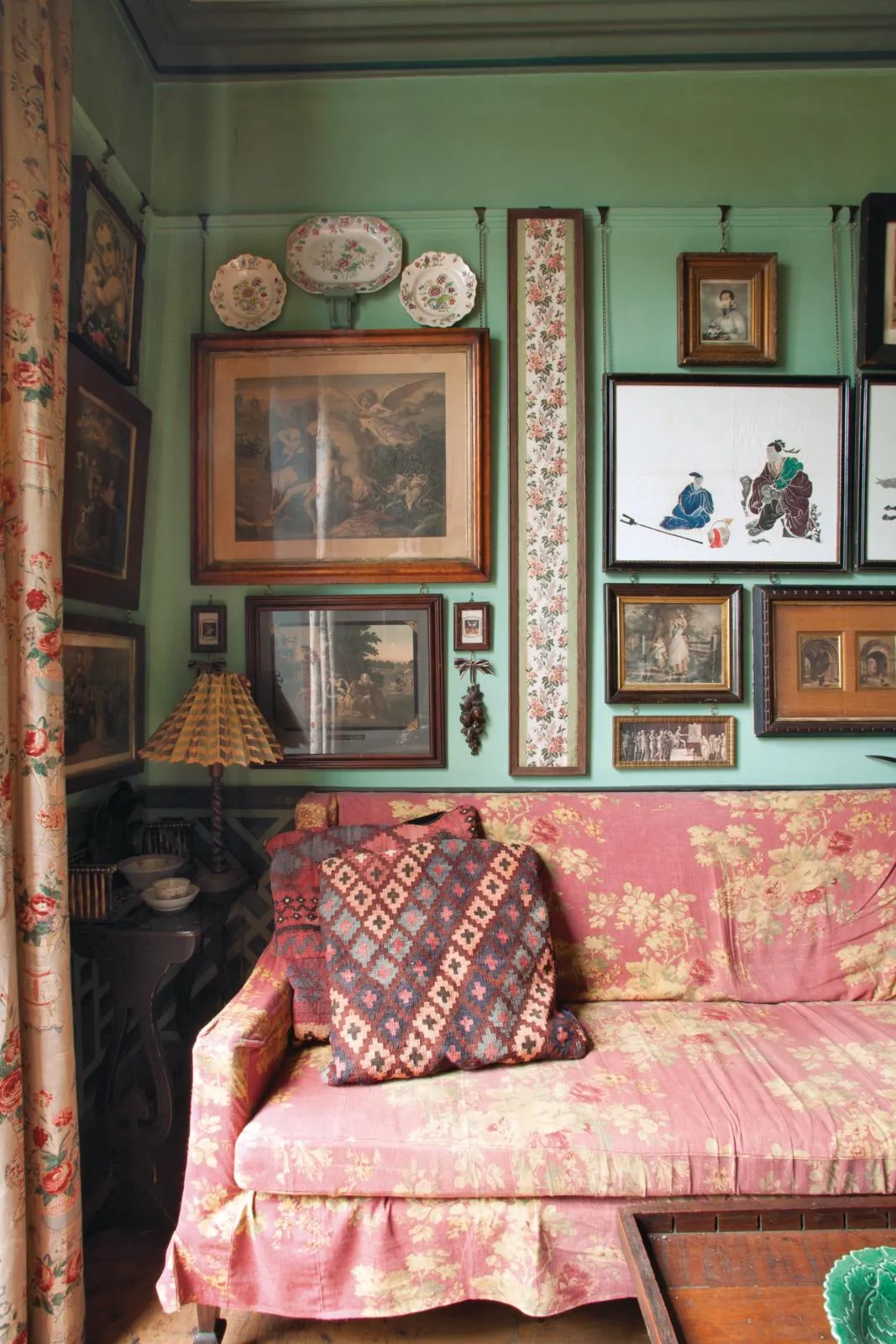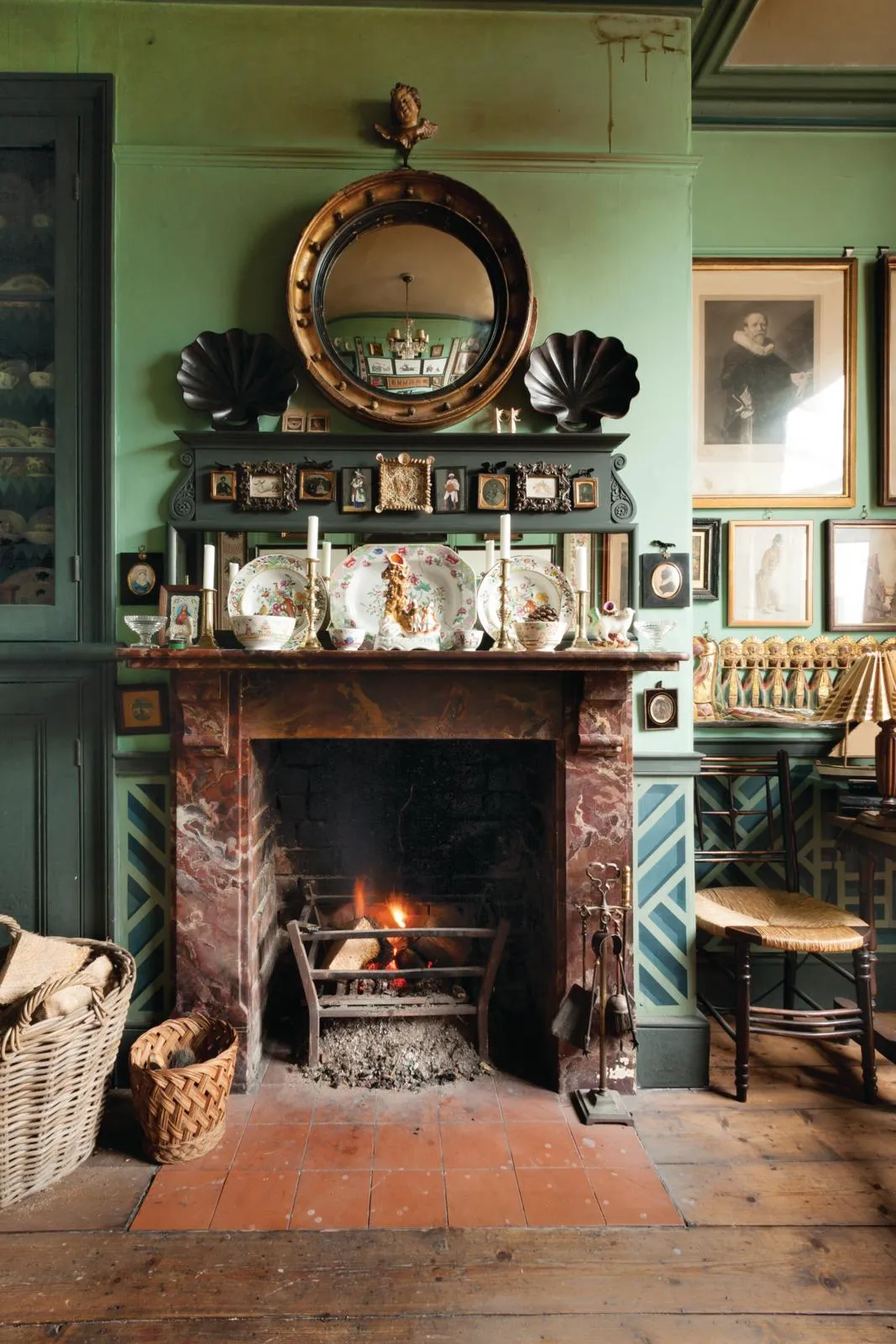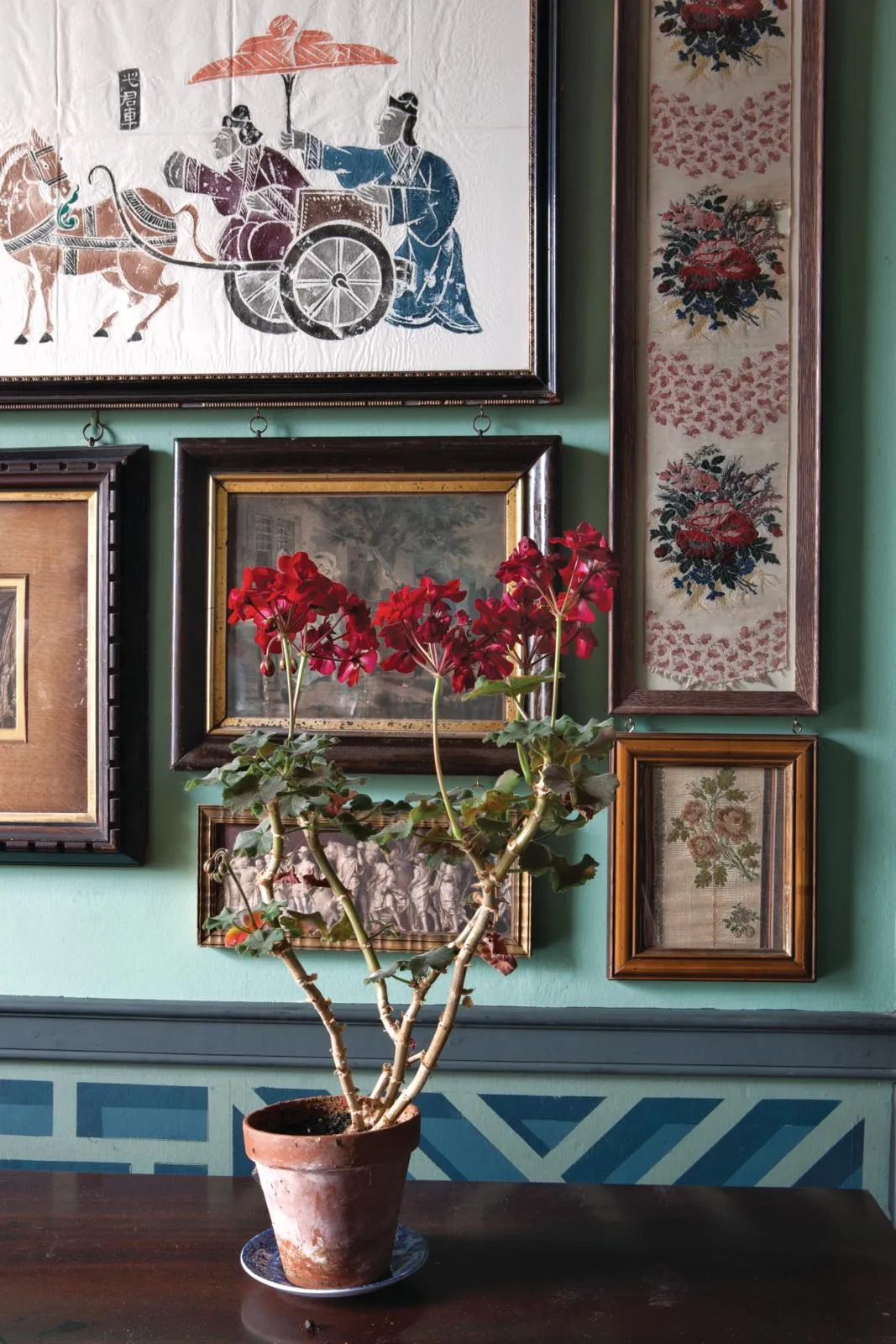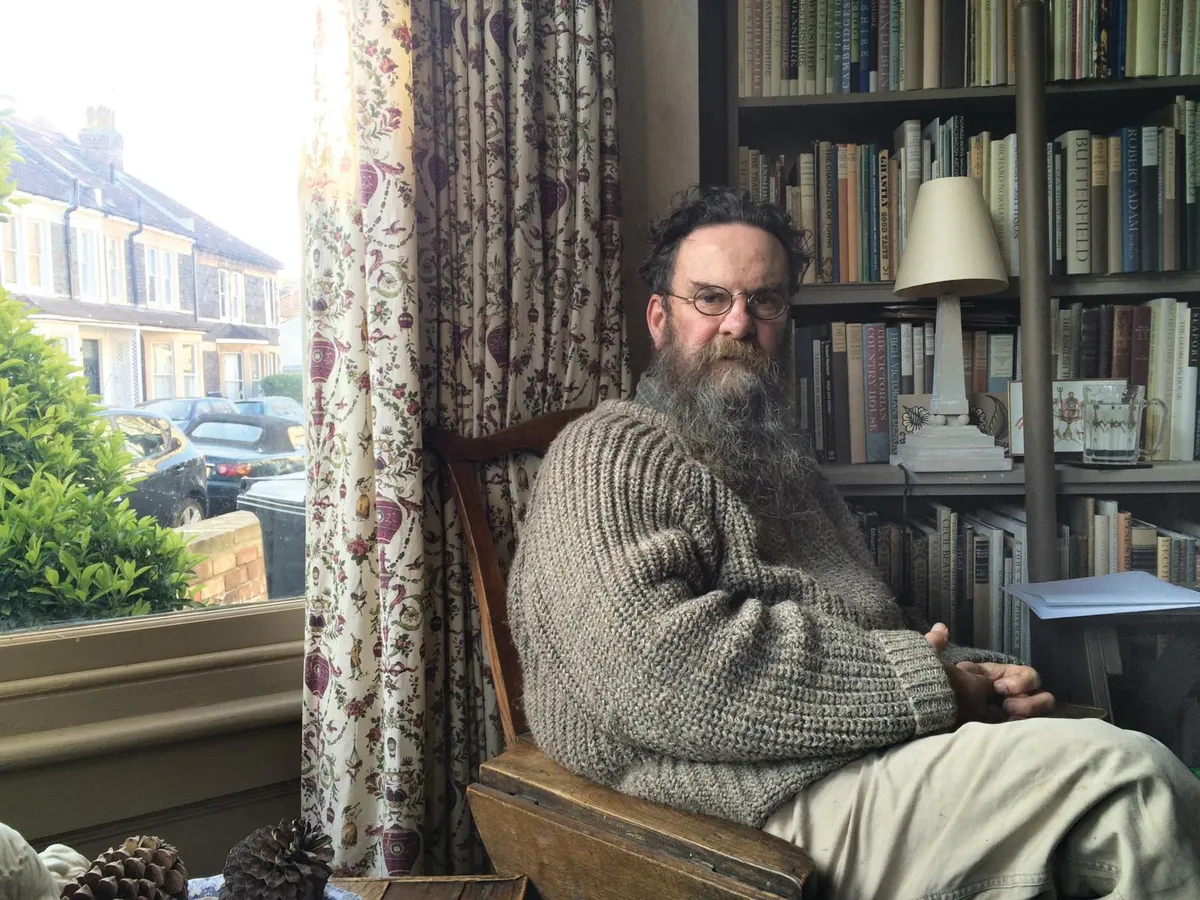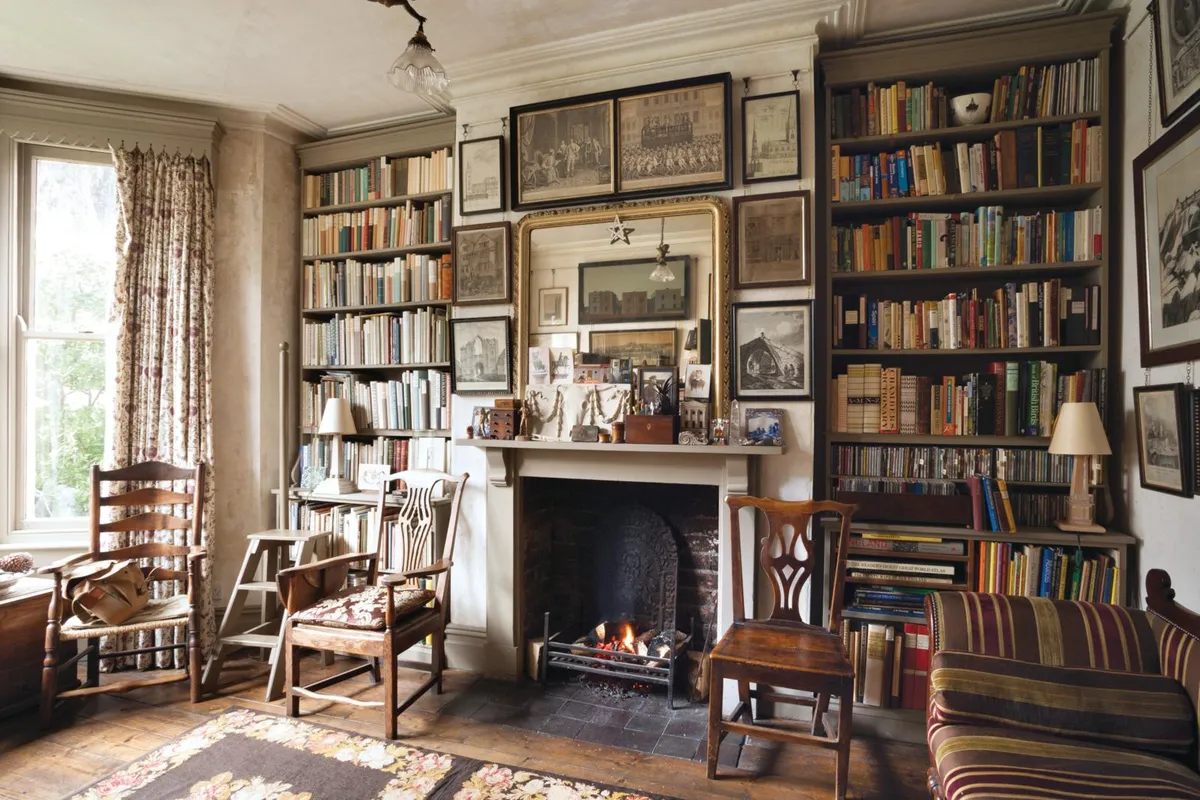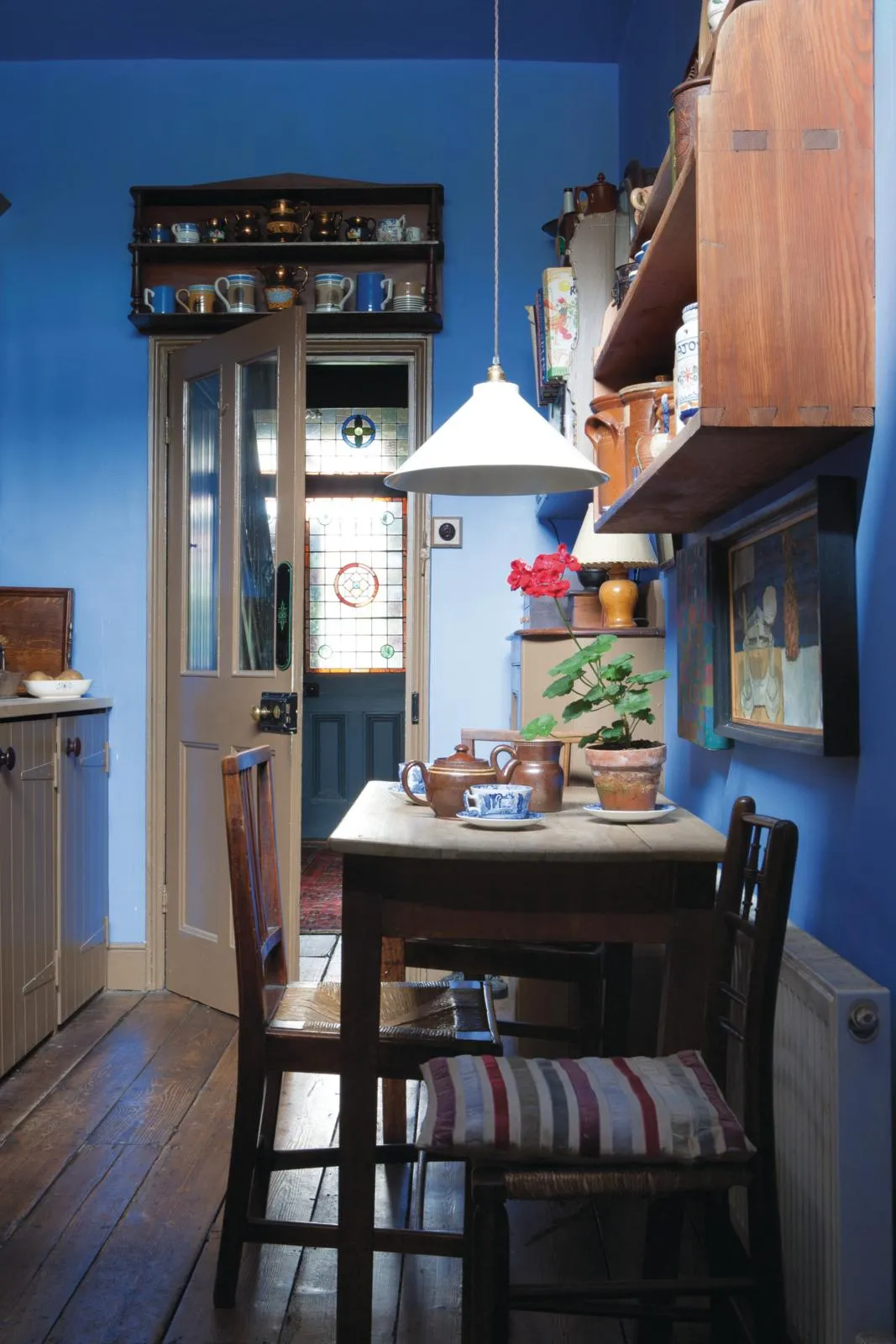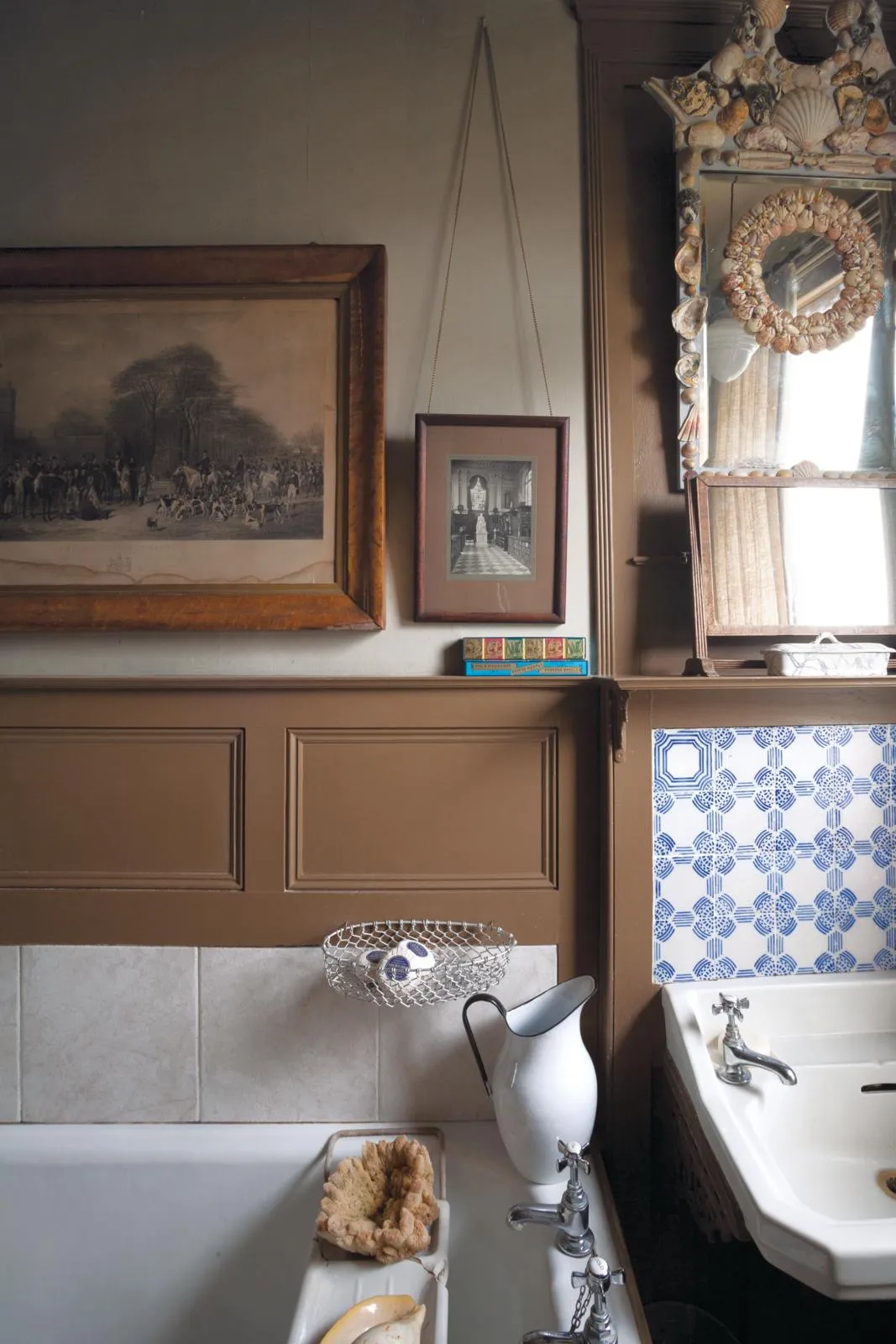Not many people could say that, on moving into a new home, they could bring with them and incorporate a 19th-century fireplace surround, exterior door complete with stained glass panelling from the same period, and a set of old French bathroom tiles.
And it’s even less likely that, once in situ, these items would fit and also look as if they had always belonged. But Otto Martin, who bought these pieces years before moving into his 1900s home in Bristol, felt certain that they would come in handy one day. ‘I’m always buying second-hand pieces. My rule is, if you like something, and it’s a good price – buy it.’
These aren’t Otto’s only criteria for buying though. Over the years he’s discovered what he likes, and what he doesn’t; his eye honed by trips to Britain’s most intriguing properties, from A la Ronde in Devon to Calke Abbey in Derbyshire.
‘I love the eccentric and eclectic mix of objects at A la Ronde and was inspired by its muted paint tones. And, on a grander scale, I also admire Calke Abbey – it was taken over by the National Trust when it was in a semi-derelict state and, although the Trust made it watertight, it has been kept largely as it was found. I love its “settled in” look. Here, rather than buying things especially for certain rooms, objects tend to just arrive. I’ve always liked the shabby, slightly lived-in look.’
You might also like a quirky, theatrical home in Bristol
Photographs of historic interiors have provided decorating pointers, too. The blue hue on the kitchen walls, for example, was commonly used in 19th-century kitchens, as it was believed to discourage flies. ‘I can tell you that it’s not true,’ laughs Otto.
Throughout his home, he’s been committed to keeping things as close to how they would have been when the house was built as possible. The kitchen is unfitted (‘I’ve got a thing about cupboards in kitchens and avoid them as much as possible’), the old scullery – with its original floor tiles – is still in use and Otto even managed to replace the 1930s fireplace in the back room with a period design that came from one of the other houses on the street.
So acute is his attention to detail – and flair for creative embellishment – that even the books in the front room have been re-covered in jackets designed and printed by Otto himself.
It was the building’s ‘bones’ that initially attracted Otto to this house, which he viewed after several years of what sometimes felt like a futile search. ‘They say that you know within seconds if it’s the right place for you. That happened here. I spotted the stained glass in the front hallway as soon as I walked through the door and thought “I like this place”.
It also had its original layout and, although it needed work, it wouldn’t involve undoing modernisations.’ It helped that the house had only had five owners since it was sold in 1900 for £120, and the last owners prior to Otto had been two sisters who had spent very little on it.
You might also like a striking flat in a Georgian Bristol townhouse
Otto has always been drawn to period properties and, while his parents were marvelling over mid-century Scandinavian furniture, he was fascinated by dark Victorian interiors. ‘In a way, I reacted against the popular styles of the 1950s and 60s. I didn’t dislike it, but there was something else that I wanted instead. I remember going to a neighbour’s grandparents’ home and it being dark and filled with Victorian furniture. It fascinated me and I always wanted to recreate that look.’
As a result, he gradually started acquiring pieces, many of which he still has on display in his home today. On the mantelpiece in the back sitting room is a Victorian Staffordshire figure that he bought at a jumble sale when he was seven years old, while the Morris & Co rush-seat chairs were purchased when he was a student in the 1970s.
Other pieces, such as the Second World War Utility kitchen table and early to mid 19th-century plates hanging in the back sitting room, belonged to his parents and his grandmother respectively.
Otto never likes to spend much on pieces, seeking out items from charity and junk shops. His house is testament to the adage that you don’t need to spend a great deal to create an individual home, filled with character and intrigue.
This could well be thanks to his belief that you shouldn’t buy pieces because you think that they’ll retain their value, but simply, ‘because you love them and think that you’ll have them forever.’ Which seems like sound advice to follow indeed.
More homes from Homes & Antiques
- Josh Widdicombe & Rose Hanson’s colourful Victorian home
- A bright, vintage-filled Edwardian home
- A farmhouse-inspired home filled with eclectic antiques
- How to renovate a Victorian home with maximalist interiors
Sign up to ourweekly newsletterto enjoy more H&A content delivered to your inbox.
